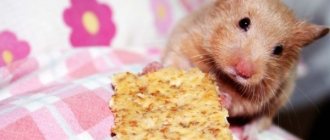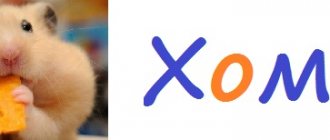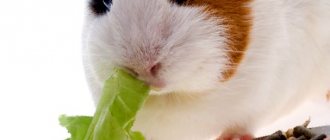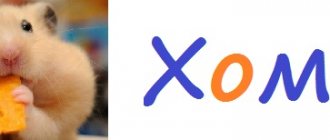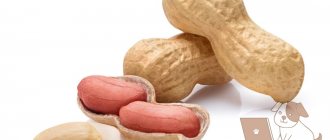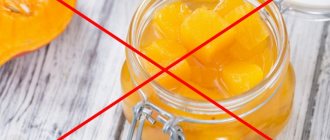- home
- Nutrition
09.05.2018
A hamster's health depends on proper nutrition. The diet must be balanced and contain the vitamins the animal needs. Pampering your pets with a variety of flavors is good, but the benefits are more important. Let's talk about a frequently asked, troubling question. Can hamsters eat pomegranate?
Dried fruits for hamsters
In winter, instead of not very healthy fresh fruits from the store, it is better to occasionally give your hamster dried fruits, but also in dosed doses.
Such treats are often offered as treats and rewards during training. Ideally, of course, prepare them yourself using a special dryer or oven. The raw materials should not be too sweet - apples, pears, viburnum, cranberries, lingonberries. It is worth considering the characteristics of the pet and its predisposition to diabetes. So, in the diet of the Campbell breed they often do without dried fruits; the Djungarian hamster is given less sweet treats, for example, apple slices. Syrian hamster and other species can be given raisins, homemade banana chips and a small piece of prunes 1-2 times a week.
Care
How to care for a small but restless pet? Now we will talk about this in detail.
- Cage cleaning should be done regularly. If the owner uses corn filler, then the dzhungarik’s home is cleaned once a week. If the filler for the cage is sawdust or wood filler, then disinfection is carried out every three days.
- How to clean? Very simple. We remove the old filler, wash the cage thoroughly with hot water and some detergent, and wipe it dry. All remains are removed from the house, the drinking bowl and bowls are washed and wiped. Fresh filler is poured into the dry cage, and the house, equipment and resident are returned to their place.
- The water in the drinking bowl is changed every day.
- The Djungarian hamster is fed twice a day. The evening portion may be slightly larger than the morning portion.
But maybe it’s still possible, if you’re careful
The hamster is a very curious animal and puts almost everything into its mouth. The teeth need to be ground down with something. So, if a pomegranate seed falls into his paws, he will eat it without hesitation. But, as we have already said, not everything that is useful for people is also useful for hamsters.
Yes, pomegranate is the king of fruits. We will modestly keep silent about Thai durian, where can you find it here? By the way, I wonder if a hamster can have durian?
Stop. We got distracted. Let's continue. The problem with pomegranate is that it is very rich in all kinds of vitamins and microelements. It is in them that its danger for the hamster lies.
For reference: pomegranate contains about 15 amino acids, five of which are essential for the body. Also, it is rich in vitamins K, C, B9 and B6 and minerals (potassium, copper, phosphorus). With all this richness, it is a low-calorie fruit. There are only 72 kilocalories in 100 grams.
So why is it so harmful to our furry pets:
- Tannins found in the fetal crust slow down the peristalsis of the intestinal tract, which leads to constipation. Considering the size of the animal and its rapid metabolism, this constipation could cost him his life. Also, the peel of the fruit contains some alkaloids, which can simply kill the poor fellow.
- The fat contained in pomegranate seeds puts a lot of stress on the liver.
- A high content of vitamins will lead to hypervitaminosis (to put it simply - too much), which is also not good for poor Khoma.
- Too much acidity in pomegranate juice is bad for the digestive system.
- Don't forget about common allergies. In the wild, hamsters are unlikely to eat pomegranate, so there is no immunity to new substances in the animal’s body. If you see that your pet is often itching, his eyes are red and tears are flowing, then most likely the poor thing is suffering from allergies or poisoning. Urgently remember what you fed and try not to give this food again.
Once again: even one pomegranate seed can lead to serious consequences, including the death of your pet.
Interesting fact: Syrian hamsters are less susceptible to pomegranate, since they still have a chance to try it in the wild. But it’s still not worth giving a Syrian a pomegranate on purpose. It’s better not to even show it to the Djungarians at all.
Properties
This unusual, exotic berry (from a biological point of view, it is a berry, not a fruit) has many beneficial properties. The fruits of perennial reed plants are rich in potassium and magnesium, which is good for the cardiovascular, urinary and nervous systems of the body. Iron, also included in large quantities, helps increase hemoglobin. The beneficial qualities of the product include the fact that it can quickly relieve hunger and restore strength. These fruits are hypoallergenic.
These berries have no less harmful properties for hamsters:
- high calorie content (dangerous for individuals prone to obesity);
- a large percentage of glucose content (for this reason, giving bananas to hamsters with diabetes is prohibited);
- the ability to cause fermentation in the intestines (due to flatulence the animal will experience pain and worry);
- too soft, viscous consistency (babies’ teeth must constantly grind down on hard food, otherwise they will grow excessively).
Those fruits that are sold in our stores have already lost most of their beneficial qualities due to the long transportation process, so feeding them to pets in order to saturate their body with vitamins and microelements is useless.
After consultation with a veterinarian, you can offer the sweet, aromatic pulp to exhausted animals that have recently overcome a serious illness to quickly restore body weight.
Based on the above, you can give your hamster a banana, but only occasionally, as a treat.
What kind of apples can you give?
Not every fruit is worth feeding your hamster.
In order not to harm the animal, the apple must meet the following requirements:
- Only fully ripened fruit can be given;
- You should not feed your pet fruits that have been treated to prevent wilting (coated with a waxy coating). If you still use such an apple, you should first wash it thoroughly and soak it for 8–10 hours in cold water;
- feed your domestic rodent sweet and sour varieties, since excess sugar and acid are equally harmful to the hamster;
- You should not give treats to an old animal or if its age is less than 1 month;
- The fruit should not be given to pregnant or lactating females.
Important! A very accurate indicator of the environmental friendliness of apples is the presence of worms in them. You can safely feed this fruit to your pet rodent.
Fresh
Fresh fruits are the simplest and most common way to feed a rodent. How to choose an apple and how to process it is described in more detail below. You should not cut the fruit into too small slices - your pet may hide 1-2 pieces. If he later eats spoiled fruit pulp, it may cause digestive problems.
Dried
Dried apples are an excellent complementary food for a hamster. They retain all minerals and fiber, the content of vitamins is somewhat lower, although this is not critical. Dried fruits are especially suitable for feeding in winter (with the beginning of the new year there are almost no vitamins left in fresh apples) and in spring. Before giving such a product to a rodent, it should be soaked in water until it swells.
Baked and stewed
It is better not to feed heat-treated fruits to rodents. This is not to say that they are harmful to the animal, but they are of little benefit. So it makes no sense to cook fruits over a fire if fresh they will bring more benefits to the hamster. In addition, such food may cause gastrointestinal problems for your pet.
Did you know? The Governor-General of the Dutch North American Dominions, Pieter Stuyvesant, planted an apple tree on the island of Manhattan (the territory of modern New York) in 1647. The tree bears fruit to this day.
Fruits for your hamster
Hamsters can be given various fruits (with the exception of citrus and exotic ones), but in small doses. The high sugar content makes this complementary food unsafe. Domestic Djungarians are given less of it than individuals of the Syrian breed - within 5% of the main diet. Campbell's hamsters are fed even more carefully.
The main fruit products that are suitable for Syrian and Djungarian hamsters include:
- apple - choose sweet and sour varieties, introduce them from 4 months, do not give to lactating females;
- apricot – a little and not overripe, it is better to give dried apricots out of season;
- peach is better than nectarine, it has less sugar;
- pear – firm yellow or green, uncommon;
- banana – preferably a little greenish, just unripe;
- plum - a little at a time, so as not to provoke diarrhea;
- melon – due to excessive sweetness, allowed only once every 5-7 days;
- watermelon - also rare, but from your own garden (it’s hard to find a store-bought one without nitrates).
Berries will help diversify your diet. Strawberries are offered once every 7 days, a piece with a diameter of 1 cm. The rest of the berries from the list are given 1 piece per week, the portion for the Syrian hamster is doubled. Allowed:
- cherries and sweet cherries (pits removed);
- currant;
- not sour gooseberries;
- grape;
- raspberries;
- blueberry;
- blackberry;
- cowberry;
- blueberry.
Of all of the above, only dietary fruits are suitable for Campbell's hamsters. These are nectarine, blueberry, lingonberry, cherry, hawthorn. It is worth remembering that exotic fruits (mango, avocado, kiwi, pineapple and others) are prohibited from being offered to all rodents. They can cause severe allergic reactions and digestive problems.
Should you give your pet pomegranate?
In winter, the amount of vitamin C in the hamster’s body decreases. Saturated pomegranate can raise the level of vitamins to the desired height. Experts recommend squeezing a couple of drops of pomegranate juice per 100 grams of water. This advice should only be used in extreme cases. A prudent decision would be to nourish and expand the diet with familiar vegetables and fruits that are not capable of harming the pet’s health.
All processes occurring in the hamster’s body occur very quickly, including diseases. To keep your pet healthy and cheerful, you need to exclude pomegranate from the list of food products. By taking care of your hamster and following the recommendations, you can increase its lifespan.
Well, at least a little...
You can try a drop. Moreover, 1 drop of juice is exactly one drop. Not more. In winter, the amount of vitamin C in the hamster’s body decreases. Fresh grass and vegetables are more difficult to get than in summer. But pomegranate is always full of these vitamins. Even in winter. If you have decided, at any cost, to expand your pet’s diet and provide him with vitamin supplements, here is one piece of advice:
Experts suggest diluting 2 drops of juice in half a glass of clean water. Just don’t give all this half a glass to the hamster at once. Let him drink plain water. This way you can compensate for the lack of vitamins in your hamster.
This advice should be used only in extreme cases at your own peril and risk. The best solution would be to feed your hamster regular vegetables and fruits that are not capable of harming your pet’s health.
All processes occurring in the hamster’s body occur very quickly, including diseases. In order for your pet to be healthy and cheerful, it is necessary to exclude this fruit, which is healthy for humans, from the list of food products. By taking care of your hamster and following the recommendations, you can increase its lifespan.
Here's what you can and can't do. Can:
1. Dry ready-made food for hamsters 2. Nuts (almonds): walnuts, cashews, hazelnuts, sesame seeds, peanuts, chickpeas, carob 3. Wheat sprouts, oats, alfalfa, bamboo 4. Seeds: sunflower, pumpkin , melon 5. Cereals: barley, wheat, oats, buckwheat, rolled oats, lentils, peas, beans, beans 6. Berries: strawberries, currants, gooseberries, blueberries, cherries (pitted!) 7. Vegetables and fruits: pumpkin (raw ), apples, carrots, bell pepper, cucumber, tomato (not winter), radish, radish, zucchini, zucchini, beets, pear, apricot, peach, melon, squash, turnip, eggplant (except overripe ones!), grapes and raisins, banana and banana chips, cauliflower (raw and cooked, but rarely), fresh and dried corn, green beans (can be defrosted frozen), Chinese salad (aka Chinese cabbage), broccoli, frozen mixed vegetables, plums (a little), fresh peas, chickpeas (lamb peas, soak overnight), young peas in shells, rose hips (peeled and in small quantities), celery (a little, rarely) 8. Boiled vegetables: carrots, beets, pumpkin, peas (without salt and cook briefly ) 9. Greens: parsley, dill, lettuce / and iceberg lettuce /, dandelion and plantain leaves, clover, nettle 10. Dried fruits: raisins, dried apricots, dried apples and pears, banana chips 11. All deciduous tree varieties: beech, ash, willow, maple, oak, poplar, walnut, birch, fruit trees such as cherry, pear, apple. 12. Rose petals 13. Popcorn without salt, sugar and fat (cooked at home) - as a delicacy 14. Drying "Simple drying" without sugar and additives - as a delicacy 15. Carob
As a protein component of the diet (2-3 times a week, one thing):
14. Boiled chicken without salt and seasonings 16. Yogurt without sugar and additives no more than 1% fat, bifilin 17. Cottage cheese 0-1% fat 18. Kefir 0-1% fat 19. Boiled chicken egg, boiled quail egg 20. Butterflies , mealworms, grasshoppers, earthworms (only purchased in pet stores!) 21. Low-fat boiled fish 22. Peeled shrimp (rarely) 23. Dried gammarus (only purchased in pet stores!)
For feeding young animals and sick animals:
24. Vegetable and meat baby food (without salt, sugar, soy) 25. Porridge with water, baby milk-free porridge without salt, soy and gluten, or just cereal soaked in water 26. Rice boiled until sticky (for diarrhea) 27. Vegetable oil (a little for constipation)
Not recommended, since products from this list can cause irreparable damage to the health of the animal:
1. Cheese 2. Ready-made food for budgies, birdseed, food for other rodents 3. Potatoes 4. Persimmons (only very sweet and absolutely non-astringent are allowed, rarely) 5. Acorns 6. Drops for rodents 7. White bread 8. Crispbreads (only mild ones can be given, which do not contain salt, sugar or seasonings) 9. Brazil nuts
1. Salt, sugar, spices 2. Butter 3. Citrus fruits 4. Breakfast cereals, muesli 5. Almonds 6. Garlic 7. Onions, leeks 8. Cherry, apricot pits 9. Raw potato eyes, potato skins 10. Sausage , sausages 11. Cow's, goat's milk in its pure form, as well as as a base for cereals 12. Sour cream, cream 13. Exotic fruits (and kiwi, pomegranate, avocado, pineapples too) 14. Everything fried and fatty 15. Dry pasta 16. Watermelon 17. Sorrel 18. Tulip 19. Kozinaki 20. Mushrooms 21. Honey (pure) 22. Branches of coniferous trees (pine, larch, spruce, false sugi), as they secrete resin harmful to hamsters. 23. Any herbs and plants grown in the city 24. Fruit juices 25. Black bread 26. Mint 27. Bloodworms, insects caught in nature 28. White cabbage, red cabbage, Brussels sprouts 29. Cookies, chocolate, ice cream
Often, hamster owners who love and care for their pets are concerned about the meager diet. Ready-made grain mixtures, regular vegetables and water are a limited choice to pamper your pet.
The variety of fruits in stores and on market shelves is amazing and the question arises: can hamsters have a bright and ripe pomegranate?
The hamster is a very curious animal, and if a pomegranate seed accidentally falls into its cage, the rodent will grab it with interest and begin to try it. To prevent possible ingress, it is necessary to carefully monitor the proximity of food for people and the cage with the animal. Why is pomegranate harmful to rodents?
But maybe it’s still possible, if you’re careful
The hamster is a very curious animal and puts almost everything into its mouth. The teeth need to be ground down with something. So, if a pomegranate seed falls into his paws, he will eat it without hesitation. But, as we have already said, not everything that is useful for people is also useful for hamsters.
But it’s delicious... is it really impossible? Even a grain?
Yes, pomegranate is the king of fruits. We will modestly keep silent about Thai durian, where can you find it here? By the way, I wonder if a hamster can have durian?
Stop. We got distracted. Let's continue. The problem with pomegranate is that it is very rich in all kinds of vitamins and microelements. It is in them that its danger for the hamster lies.
For reference: pomegranate contains about 15 amino acids, five of which are essential for the body. Also, it is rich in vitamins K, C, B9 and B6 and minerals (potassium, copper, phosphorus). With all this richness, it is a low-calorie fruit. There are only 72 kilocalories in 100 grams.
So why is it so harmful to our furry pets:
- Tannins found in the fetal crust slow down the peristalsis of the intestinal tract, which leads to constipation. Considering the size of the animal and its rapid metabolism, this constipation could cost him his life. Also, the peel of the fruit contains some alkaloids, which can simply kill the poor fellow.
- The fat contained in pomegranate seeds puts a lot of stress on the liver.
- A high content of vitamins will lead to hypervitaminosis (to put it simply - too much), which is also not good for poor Khoma.
- Too much acidity in pomegranate juice is bad for the digestive system.
- Don't forget about common allergies. In the wild, hamsters are unlikely to eat pomegranate, so there is no immunity to new substances in the animal’s body. If you see that your pet is often itching, his eyes are red and tears are flowing, then most likely the poor thing is suffering from allergies or poisoning. Urgently remember what you fed and try not to give this food again.
Interesting fact: Syrian hamsters are less susceptible to pomegranate, since they still have a chance to try it in the wild. But it’s still not worth giving a Syrian a pomegranate on purpose. It’s better not to even show it to the Djungarians at all.
Reasons for banning pomegranate
Pomegranate is on the list of prohibited fruits because of its rich taste and rich in microelements.
You don’t have to listen to the advice of experts on proper nutrition for rodents and experiment by giving your pet a piece of crust or a couple of grains, but there are good reasons for the ban on feeding your animal exotic food:
- The tannins found in the peel of the fruit have a strong effect and slow down the peristalsis of the intestinal tract, which causes constipation. For a tiny organism, such a shock can be fatal. Also, the peel of the fruit contains a small percentage of alkaloids, which can kill a pet.
- The fat contained in pomegranate seeds can negatively affect the liver and cause intoxication.
- Despite the animal’s ability to process many enzymes, a high level of vitamins can lead to an overabundance and the appearance of hypervitaminosis.
- Excessive concentration of acidity in pomegranate juice negatively affects the digestive system. Even in diluted form, the juice corrodes the walls of the stomach and can lead to discomfort.
- Essential oils in the fruit can cause an allergy attack. Discharge of tears, redness and itching of the skin are the first signs of poisoning.
- The sharp edges of the bones can injure the mucous membrane of the cheek pouches and cause an abscess.
A microscopic dose of pomegranate can lead to serious consequences, including the death of the animal.
What is better to exclude?
When compiling a list of foods that should not be given to your hamster, you can mention:
- bakery products;
- pasta;
- peas;
- beans.
An immutable requirement is a ban on all foods that contain sugar, salt and other spices. It is unacceptable to feed jungarians with fatty or fried foods. Everything that is intended for human nutrition is prohibited. Confectionery products pose the highest risk: cookies, muesli and kozinaki are included in any list of prohibited products. Honey, ice cream, and all chocolate products are dangerous for animals.
Since hamsters can be fed quite a lot of foods, there is no need to experiment with junk foods. Even if something seems unjustified or incomprehensible, there is always a reason. Any ban is developed on the basis of many years of practice.
What is quite common to see on the table may not be tolerated by the Djungarian’s body. Almonds, as well as apricot kernels and other parts of plants containing hydrocyanic acid, are extremely dangerous for hamsters. Nitrates accumulate in watermelon pulp. Because of honeysuckle and elderberry, animals may experience convulsions and suffocate. Solanine contained in potatoes is dangerous.
It is important to consider that a hamster is much smaller than a person and even most pets. Therefore, a seemingly insignificant portion of toxins can destroy him
All astringent substances (for example, those contained in persimmons) inhibit digestion. Tanning components disrupt normal intestinal function and pose a huge risk for animals. But the opposite failure (diarrhea) is also harmful for the hamster.
Therefore, the following are prohibited:
- hot ginger;
- salt;
- paprika.
This is especially true for the saltiest varieties. But even those that are not recognizable to the taste as very salty are also unacceptable. Moreover, cheese is also an abundance of fat.
If a hamster's intestines are swollen, then even the most qualified veterinary care often does not save him. You can provoke bloating by giving the animal:
- black bread;
- cabbage;
- beans.
The liver of a herbivorous creature is evolutionarily not adapted to very fatty foods. Even the seeds of various plants, usually included in the lists of permitted foods, can be consumed only on a limited basis. And vegetable oil and butter, all types of fried foods are excluded by 100%. Among fruits, avocado has excessive fat content.
It is worth remembering that the danger can be not only due to chemical and biological reactions. Thus, the Djungarian hamster eats wheat willingly and calmly. However, if you give it spaghetti or other dry pasta, the animal can injure the bags behind its cheeks.
For the same reason, any bones (not just vegetable ones), spicy and too hard types of food are unacceptable. Inflammation, especially one that develops into an abscess, is very difficult to treat. Many hamster breeders, in order not to repeat tedious and expensive therapy, even begin to give seeds to their pets in a purified form.
Essential oils of any kind and bright, rich dyes can provoke allergic reactions. Strawberries and tangerines most often initiate them. Characteristic manifestations are constant tears, redness of the skin, and scabies. Antihistamines are not available for hamsters. Therefore, the only thing left is to exclude problematic products.
Lactose, which is rich in milk and dairy products, including cheese, is extremely difficult to digest. Drops for rodents are given a maximum of once every 30 days. Strictly prohibited:
- grain mixtures for other rodents and parrots;
- Brazil nuts;
- oak acorns;
- all citrus crops;
- pineapples;
- kiwi;
- pomegranate;
- mushrooms;
- branches and bark of coniferous trees;
- sausages;
- garlic and onion;
- green plants grown within the city or in other places with unfavorable environmental conditions.
Plant food
Fruits in syrup, compote berries, and jam should not be offered to rodents. Any preserved food is prohibited because it contains sugar and salt. Raw seasonal fruits are preferred for feeding. Some of them are placed in the cage boiled (zucchini, beets, carrots, pumpkin). The cooking time in this case is minimal. The water is not salted.
If fresh fruits and vegetables are purchased at the store, it is better to cut off the skin (it often contains pesticides). For home harvest, this step is not necessary. Plant foods, including those from your own garden, must be thoroughly washed. After all, harmful bacteria and helminth eggs may remain on its surface.
All fruits must be fresh, not chapped, and free of rot. The pits of cherries, apples, cherries, plums, and apricots must be removed. The hamster can be poisoned by them. If a pear, pepper or other delicacy is cut into several pieces, the remaining pieces are stored in the refrigerator for several days.
It is important to remember that excessive fruit feeding causes indigestion and increased gas formation in hamsters, and increases the risk of diabetes and obesity. In small quantities, fruits help strengthen the immune system, improve intestinal motility, and are involved in the prevention of many diseases.
What to eat for the animal to wear down its teeth (twigs, pumpkin, carrots)
An excess of any green food can lead to diarrhea, so it is important to observe moderation when feeding and do not give parsley to pregnant and lactating females. Branches of fruit crops, linden, raspberries, rose hips are necessary for grinding teeth. The branches are washed, doused with boiling water and placed in a cage. If you don’t give the hamster twigs to wear down his teeth, he will do it on the bars of the cage or gnaw on everything he can reach, possibly biting the owner.
The rodent will select grains from the spikelets like its counterparts in the natural environment.
The food mixture from the store is poor in vegetables and fruits, so you need to give your pet seasonal crops - pumpkin, zucchini, apples, pears, sweet peppers and cucumbers. Vegetables are peeled and offered in small portions.
Occasionally you can please your gourmet with raisins or a slice of dried apple. But excess sugar and sweet fruits are unacceptable.
Is it possible to give raisins to a hamster?
The answer to this question is unequivocal - you can give your hamster raisins, but you should follow some rules and limit the rodent in consuming this dried fruit
You can safely please your pet with such a delicious product. Of course, you shouldn’t shower him with kilograms of treats, know when to stop and don’t overdo it with this treat. Also exclude the possibility of replacing the main diet exclusively with this dried fruit. Raisins should only be used as “candy.” Your pet should receive complete and healthy food every day, but raisins should only be used as a sweet treat no more than once or twice a week.
During feeding, use some tricks that will help accustom the animal to your hands. Give sweets only after your pet runs up to your hands. Then the rodent will develop a reflex that something tasty can be received from the hands of the owner, and the baby will immediately become more affectionate and pliable. It’s so nice to hold a fluffy ball on your lap, and it’s good for a hamster not to be afraid of its owner.
Proper nutrition - what you can and cannot feed hamsters at home
The hamster's nutrition must be balanced. Pet stores offer owners of Djungarian and other types of hamsters industrially produced food that is specially adapted and safe
It is important to pay attention when choosing food packaging in a store, so that it is intended specifically for a hamster, which should be marked accordingly on the packaging. Additionally, you can consult with a sales specialist about which food is best. Ready-made mixtures contain a whole list of food products: vitamins, grains, vegetable and fruit additives, nuts, seeds
Ready-made mixtures contain a whole list of food products: vitamins, grains, vegetable and fruit additives, nuts, seeds.
In addition to ready-made dry food, once a month you can offer grain sticks at home, on which your pet will grind his teeth.
You can give bread, but not too often, better in winter. It is preferable to feed grain bread - dried, in small portions.
At the first sign of constipation, discontinue the product.
What foods make up the natural diet
The hamster is not picky. In nature, he loves to eat grain crops: buckwheat, wheat, rye, corn, as well as legumes: peas and beans. Even tree roots, green juicy grass, fruits, and berry branches are used as food for rodents. Animals store a lot of things in their burrows: seeds and nuts. In gardens, animals can damage potatoes and other vegetables. A small pet needs protein, so it can eat small crustaceans, mollusks or insects. Carrion also occasionally serves as food for the rodent.
Banana in the diet of cubs and pregnant females
Fruit should not be given to baby hamsters. Their body is still very small; banana fruits can easily clog the airways. In this case, the rodent risks suffocation. But if you really want to pamper your pet, then there is a solution - banana chips. They are hard, so they will not be able to stick to the cavities of the body.
Banana chips are dried (baked) pieces of the fruit. The sugar concentration in this dish increases
You should also be wary of store-bought chips, as they may contain various additives that are harmful to rodents. It would be safer to cook them yourself in the oven.
Bananas are prohibited for pregnant hamsters. The fruit should not be given to females expecting offspring; it can cause bloating. If this happens, the offspring will be lost.
Vitamins, mineral supplements and treats
For the proper development and full functioning of the body of Syrian hamsters, it is necessary not only to feed them in a balanced manner, but also to provide them with special fortified preparations. They are available in solid and liquid form and are mixed into the animal’s drink or food.
A mineral stone is also placed in the pet's cage. It will not only help sharpen the incisors, but also enrich the body with essential substances. Pregnant females are given a chalk stone, which can have a fruity or herbal flavor and will provide the expectant mother with calcium and other trace elements.
As treats for your Syrian hamster, you can eat rose petals, unbuttered and salt-free popcorn, dried fruits, cereal sticks and fruit chips.
Tama the Cat: Train Station Master
This happened in the early 2000s, when the unprofitable Kishi station in the Japanese city of Kinokawa was almost closed due to unprofitability. Residents, of course, protested, but it is unlikely that their efforts would ultimately be crowned with success. The situation was saved by a local cat named Tama, who loved to bask in the sun near the train station. The station manager noticed how enthusiastically passengers reacted to this couch potato and gave him the official position of caretaker. The cat was given a uniform cap, a badge and a monthly salary in the form of free food.
The duties of the newly minted minister included advertising functions. He greeted passengers, allowed himself to be petted, and was always somewhere on the platform. It must be said that this policy very quickly led to commercial success. Tourists began to come to Kishi station just to look at the railway cat and take pictures with him. From that moment on, there was no further talk about closing the station.
But the unusual cat's career did not end there. In 2008, Tama became a supervisor and was charged with monitoring the performance of professional duties by staff. That same year, the cat was knighted. Another year later, according to the project of the famous designer Eiji Mituku, the railway included in the schedule a train dedicated to the legendary animal. The carriages were painted with views of Tama, the locomotive was decorated with his muzzle, and meowing signaled the opening (closing) of the doors. But this did not become the crown of the cat’s career.
A year later, Tamu was appointed third party of the railway company, entrusted with the post of executive director. By his old age, it was already difficult for him to work every day, and the management allowed the elderly cat to come to work 3 days a week.
Tama died at the ripe old age of 14. But even after this, the career did not end. Posthumously, the cat was elevated to the rank of Eternal Station Master, thus perpetuating his memory. After all, over the years of work, this four-legged employee has brought considerable income to his company. The tourist flow through the station increased to 300 thousand people annually, and the financial indicator amounted to more than 1.1 billion Japanese yen.
The company's management did not want to accept the loss of such a profitable and already promoted advertising brand. Tama was replaced by Nitama (the second Tama). True, later with the third cat there was an overlay. He was found at Okayama Station and offered a position in Kishi. But the owner did not agree to the move. Next came Yontama (the fourth Tama), who had already had to undergo a special training course before taking her place on the platform of the railway station.
And the flow of tourists wanting to take a photo with the legendary heirs of the first Tama still does not dry out.
I like2I don't like
